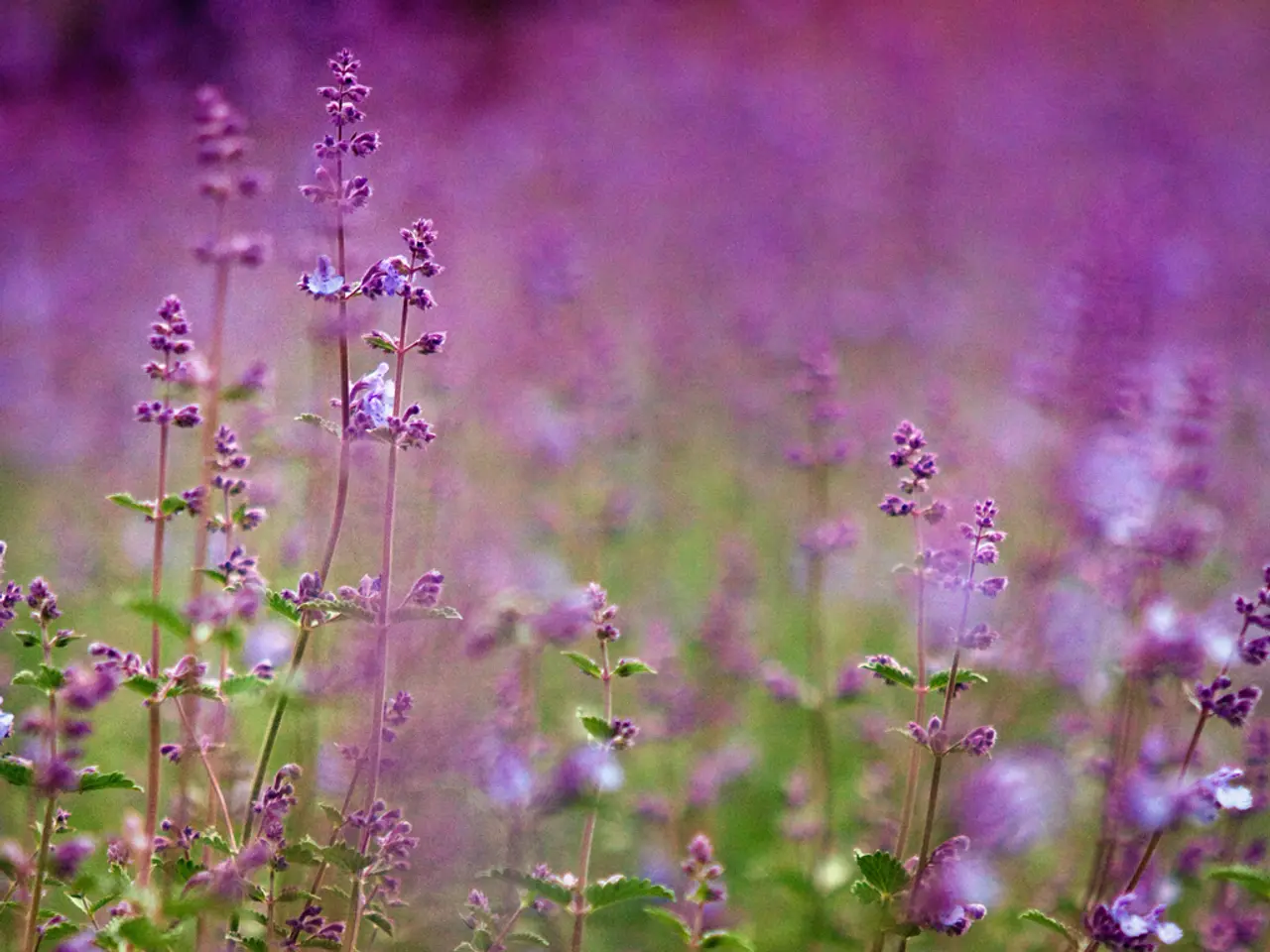Determining the Best Time for Lavender Harvest: Discovering Ideal Moments and Methods
In the heart of the garden, English lavender (Lavandula angustifolia) thrives, favoured for its hardiness and superior scent. To ensure a bountiful harvest, it's essential to follow best practices for growing and caring for these fragrant plants.
Light
For optimal fragrance and oil production, lavender needs full sun, with at least 6 to 8 hours of sunlight daily. Position your lavender in a spot where it can bask in the sun's rays, promoting the growth of strong plants and lush, fragrant blooms.
Soil
Well-draining, preferably sandy or loamy soil is ideal for lavender. Avoid clay or soggy soil, as these can lead to root rot. If you're growing lavender in a container, use pots with drainage holes and a slow-release fertiliser.
Watering
Water lavender deeply but infrequently, allowing the soil to dry out between waterings. Lavender prefers dry conditions and does not respond well to heavy or moist soil. Mulching is also not recommended, as it can retain moisture and promote root rot.
Pruning
Regular pruning is crucial for maintaining the shape of your lavender plants and encouraging strong growth. Prune lavender annually to promote new growth and prevent the plants from becoming woody.
Harvesting
The ideal time for harvesting lavender is early in the morning, after the dew has dried but before the heat of the day. This is when the essential oils are most concentrated, ensuring a fragrant and potent harvest. Cut the flower stems just above the leaves, and harvest young, fresh flowers rather than older buds to maximise essential oil content.
Drying
Once harvested, lavender stems can be gathered in small bundles for drying. Air-drying is the traditional method, but low heat dehydration can also be used to preserve beneficial compounds. Drying usually takes about 2-4 weeks, depending on environmental conditions. To check if lavender is dry, take a stem and see if it snaps cleanly.
Using Oil
When making lavender oil, use fresh flowers and quality carrier oils such as jojoba or sweet almond to retain potency. Remember, the fresher the plant material, the more potent the oil will be.
Following these guidelines supports robust growth, maximises essential oils responsible for lavender's signature fragrance, and yields the best quality product for culinary, aromatic, or medicinal uses. Happy gardening!
Note: This article is based on research and best practices, and Glen, the gardening expert mentioned, is a fictional character created for the purpose of this article.
- To achieve a flourishing home-and-garden lifestyle with lavender plants, it's imperative to locate them in a full sun spot with at least 6 to 8 hours of sunlight daily, as optimal light conditions foster strong growth and fragrant blooms.
- For a thriving lavender plant in a pot, use well-draining, preferably sandy or loamy soil with drainage holes and a slow-release fertiliser to ensure it doesn't develop root rot in its home-and-garden environment.




